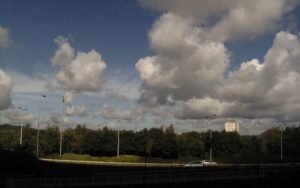I like this time of year, a chance to reflect on the last 12 months and take stock of accomplishments and realise the achievements. And something I like to gauge a success on is the longevity of a solution, and a time-lapse comparison 6 months apart is seemingly my go to example.
To elaborate on this achievement, earlier this year was the setup of a homebrew CCTV solution using an array of Raspberry Pi’s with cameras, and a VM Cent OS server acting as a PVR host. A surplus Pi W Zero was pointed at the hills and used as a time-lapse experiment.
The real achievement is that since its conception in early June, it has been stable enough to run in the background, capturing footage for such an occasion.
So here I present my latest time-lapse, a split screen video on the difference between a June day and a December day:
